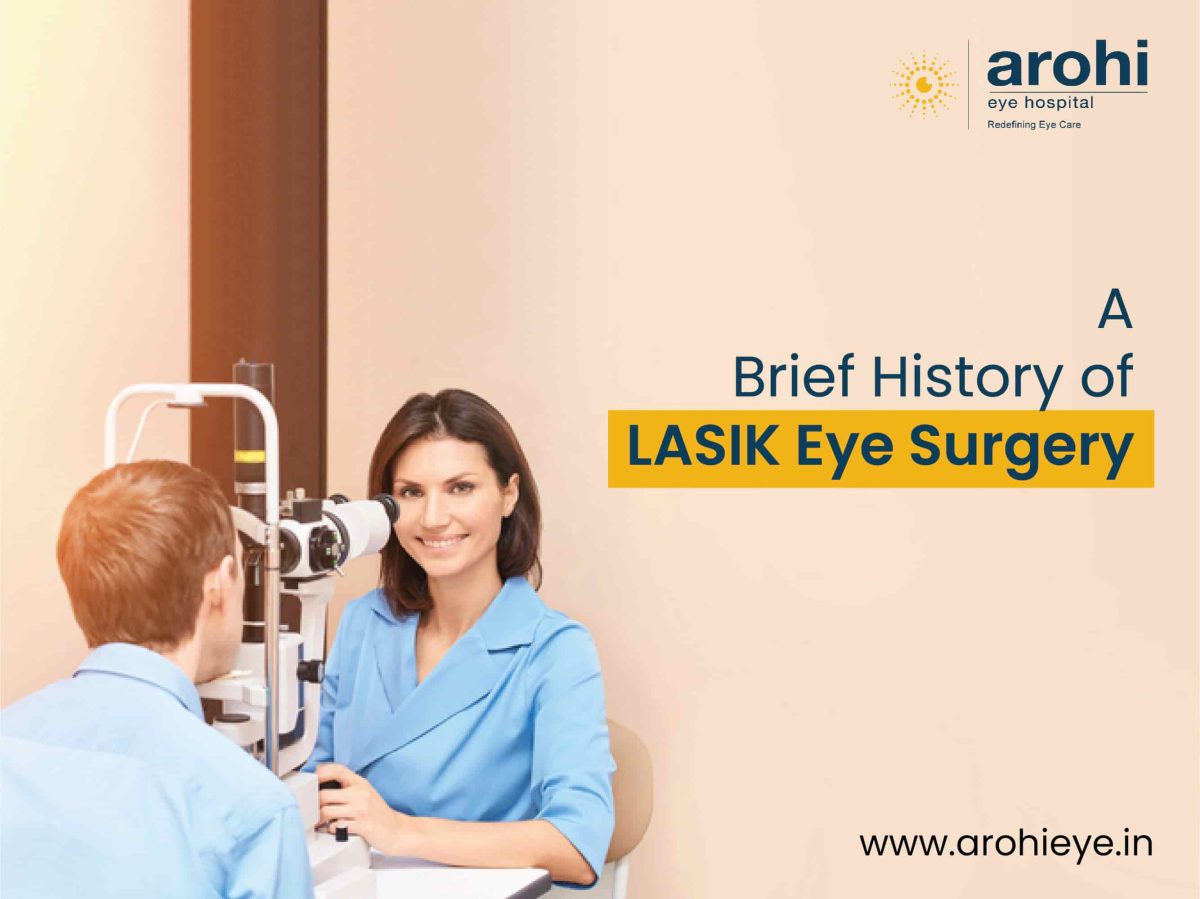Article Reviewed By: Dr. Shradha Goel
Most people are still unaware of the origins of LASIK eye surgery. LASIK is one of the most popular vision correction surgeries that involves reshaping the cornea, the clear front part of the eye, that allows light to focus on the retina in the back of the eye, thus providing clear vision to the person.
LASIK can be used to fix the most common types of refractive errors like myopia, hyperopia, and astigmatism. If you are looking to get LASIK surgery in India you would probably be interested in knowing more about the history of this surgical technique. So let’s dive deeper into the exciting background of the evolution of LASIK and discover the research and developments that took place over the years.
1930s
During the late 1930s, Dr. Barraquer postulated that refractive problems like myopia and hypermetropia could be treated by altering the cornea’s structure. Regarded as the Father of Modern Refractive Surgery, Dr. Jose Barraquer dedicated his life to developing surgical techniques and tools, which resulted in the advancement of corneal transplantation, refractive corneal surgery, and lens surgery.
1940s – 1960s
Jose I. Barraquer Moner’s brainchild, keratomileusis, was established as the first stromal sculpting technique to treat refractive defects in 1948. After going through many developments over time, the incorporation of microkeratome finally led to laser in situ keratomileusis-LASIK treatment, as we know it today.
In 1948, Dr. Jose began using a self-invented device called a microkeratome to shave tiny sections off of his patient’s corneas to improve their vision. The device, microkeratome, can shave off tiny tissue segments. His research on keratomileusis and keratophakia, published in 1964, served as a foundation for the theories underlying PRK and LASIK.
1970s – 1990s
In the 1970s, Russian ophthalmologist Dr. Svyatoslav Fyodorov noticed that a young boy who was myopic (near-sighted) was able to get improved vision after surviving corneal injuries from glass fragments. Later, he realized that the radial cuts from the glass flattened his cornea.
Fyodorov went on to refine this technique and ended up developing radial keratotomy (or RK), a technique for performing eye surgery that flattens the cornea by making cuts followed by a radial pattern.
The early precursor of LASIK eye surgery used microscopic incisions to reshape the cornea to treat nearsightedness. Doctors began adopting this technique in the early 1980s, but nearly 50% of people who underwent RK surgery faced changes in their vision between 6 months to 10 years following the surgery. This rendered radial keratotomy surgery obsolete in no time.
During the late 1980s, Gholam Peyman patented a laser particularly for reshaping the cornea in 1989. This led to numerous experiments using different lasers, such as excimer and femtosecond lasers, to restructure the eye.
1990s
The FDA authorized the first laser for LASIK surgery in 1998. Lasersight Technologies, Inc. was the first manufacturer to get FDA permission; about a year later, Summit Technology, Inc. also received approval.
In 1995, the FDA authorized PRK for the general public, giving birth to laser treatment for vision correction. A team under the supervision of Dr. Steven Trokel performed the first laser eyesight correction treatment, known as PRK (photorefractive keratectomy). Unlike LASIK, which stands for Laser-Assisted In-Situ Keratomileusis, PRK comprises fully removing the epithelium (the outer layer of the cornea) from the cornea before reshaping it with a laser.
The Advent of LASIK
In 1999, LASIK was introduced, which has now become the procedure of choice for correcting refractive errors. It’s easy to see why laser eye surgery has become so popular. In addition to being easy to control, predictable and painless, it comes with a short recovery time. The other disadvantages of the other procedures—being more invasive, requiring more downtime, and including complications such as refractive errors—are finally resolved.
Why is LASIK such a popular choice?
LASIK is the most popular form of refractive surgery in the world, and it’s also the most commonly performed type of refractive surgery. Since every patient is different, some may be more suited to LASIK or other refractive surgical procedures, while others may require a different method.
We recommend consulting an eye specialist before making your surgery choices. Simply do a Google search for “eye doctor near me,” and you will land with the list of the best doctors according to your location.
There are several reasons why laser eye surgery is so popular. First, it usually causes less pain and is more comfortable than other alternatives like LASEK. The risks associated with the procedure are small, and recovery is quick.
Plan Your LASIK Treatment With Arohi
At Arohi Eye Hospital, combining the skill and experience of surgeons at the forefront sets us apart in terms of LASIK surgery in Mumbai, ensuring that you’re in safe hands!
If you want to learn more about our successful LASIK eye surgeries conducted at our Mumbai Facility, contact us today.
References:
- National Library of Medicine – The history of LASIK
- Laser Eye Center – The History of LASIK Eye Surgery
- WebMD – A Brief History of LASIK Eye Surgery
Dr. Shradha Goel
Dr. Shradha Goel, Chief Surgeon at Arohi Eye Hospital, is a renowned Phaco-LASIK surgeon with over 10,000 surgeries to her credit. She earned her MBBS from Grant Medical College, Mumbai, and a Master’s in Ophthalmology from Kasturba Medical College, Manipal. As a member of the American Academy of Ophthalmology, Dr. Goel specialises in LASIK, refractive errors, and cataract treatments.


